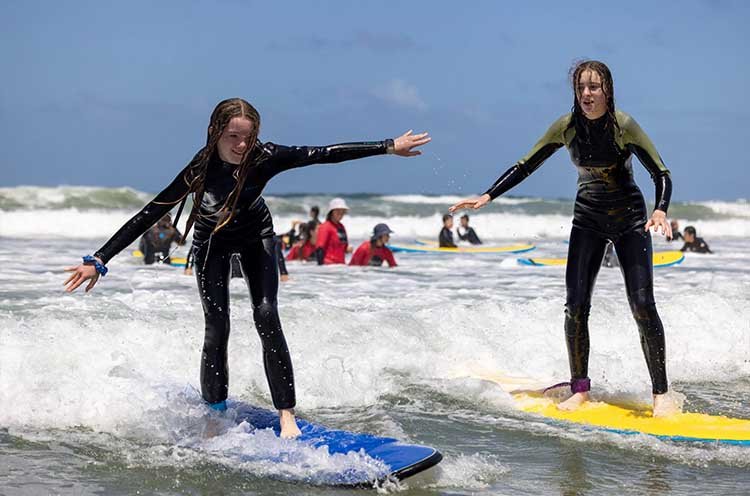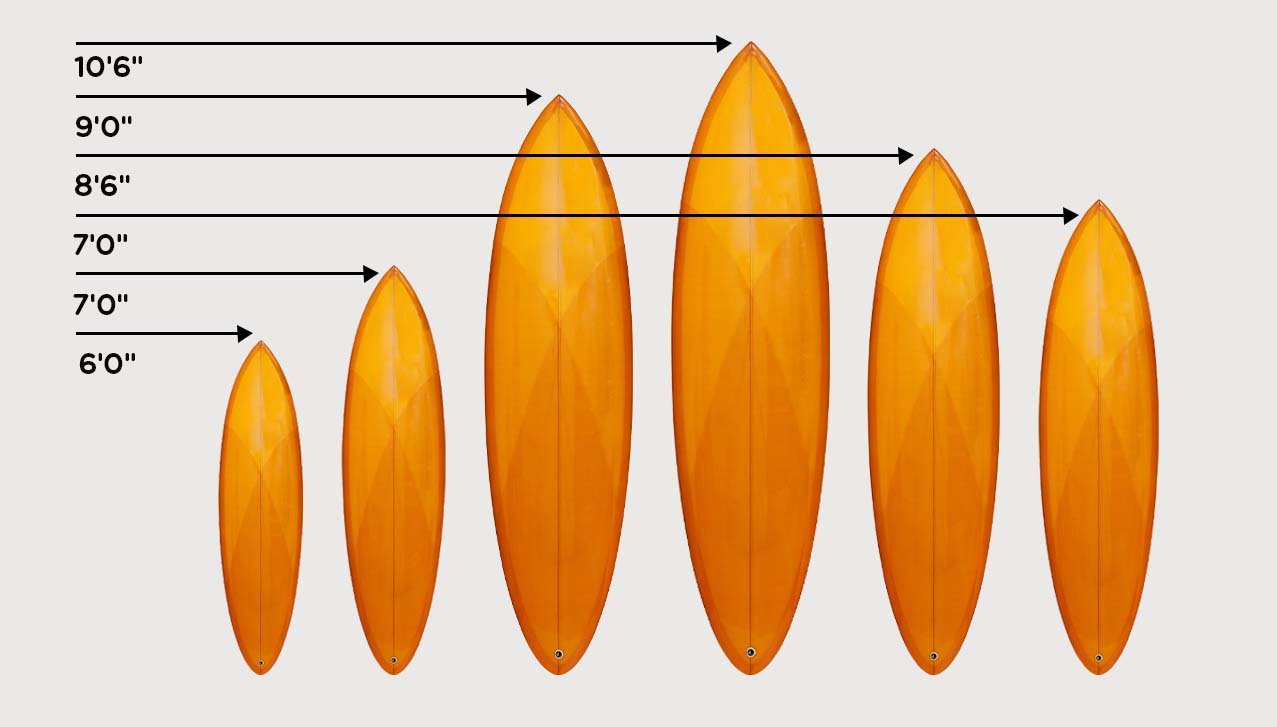As an Amazon Associate I earn from qualifying purchases.
This post contains affiliate links.
What size surfboard should I get as a beginner? Find the correct answer to this question before you start surfing. Whether you’re drawn to the sport by the allure of the ocean or the desire to challenge yourself, choosing the right surfboard is crucial to your success as a beginner. With so many options available, finding the perfect size surfboard might seem overwhelming. But fear not, as this comprehensive guide will help you navigate the waves of information and steer you toward the ideal surfboard for your skill level and preferences.

Understanding the Basics
Before delving into the specifics of surfboard sizing, let’s establish some key concepts. Surfboards come in various shapes and sizes, each designed to suit different types of waves and surfing styles. The primary factors that influence your choice of surfboard size include your skill level, body weight, height, and the type of waves you plan to ride. While there’s no one-size-fits-all answer, understanding these factors will set you on the right path.
Matching Skill Level to Surfboard Size
As a beginner, selecting the right surfboard size can significantly impact your learning curve. It’s essential to choose a board that provides stability and forgiveness while you’re still getting comfortable with the art of balancing on the waves. Generally, longer and wider boards offer more stability, making them a popular choice for beginners. Look for a board with ample volume to help you paddle and catch waves easily.
The Role of Body Weight and Height
Your body weight and height play pivotal roles in determining the ideal surfboard size. If you’re on the lighter side, a slightly larger board might be beneficial to ensure you have enough buoyancy. Conversely, if you’re on the heavier side, a board with more volume can help you stay afloat and catch waves efficiently. Additionally, taller surfers may benefit from longer boards to provide enough surface area for stable paddling.
Choosing the Right Board Type
Different types of waves require different board shapes. As a beginner, you’ll likely start with smaller, gentler waves. A longboard or a funboard can be an excellent choice for these conditions. Longboards offer stability and ease of use, making them perfect for mastering the fundamentals. Funboards, which are a bit shorter than longboards, combine stability and maneuverability, allowing you to progress your skills as you become more comfortable in the water.
Honing in on the Ideal Size
Now that we’ve covered the fundamental factors, let’s discuss how to pinpoint the precise surfboard size that suits you. While weight and height are significant considerations, your experience level is equally important. Here’s a general guideline:

- Longboards for True Beginners (9’0″ – 10’6″): If you’re just starting, consider a longboard around 9 to 10 feet in length. These boards provide exceptional stability, making it easier for you to catch waves and practice your balance.
- Funboards for Progression (7’0″ – 8’6″): As you gain confidence and skills, transitioning to a funboard in the 7 to 8.5-foot range is a natural step. These boards offer more maneuverability while still providing stability.
- Shortboards for Advancing Skills (6’0″ – 7’0″): Once you’ve honed your basics and are ready to tackle more challenging waves, a shortboard could be the next step. These boards are shorter and more responsive, allowing for sharper turns and tricks.
Remember, these are just general guidelines, and personal preferences can also influence your choice. It’s always a good idea to consult with experienced surfers or professionals at local surf shops for tailored recommendations.
Fine-Tuning Your Decision
To fine-tune your surfboard selection, consider the following:
- Trial and Error: Renting or borrowing different boards can give you a feel for what works best for you. Pay attention to how each board performs in various wave conditions.
- Volume Matters: Board volume, often measured in liters, is a crucial indicator of buoyancy. As a beginner, more volume generally translates to better stability.
- Tail Shape and Rocker: These features impact how a board maneuvers and rides on the waves. Research the various tail shapes (round, square, pin) and rocker profiles (flat, moderate, aggressive) to understand their effects.
Conclusion
In conclusion, selecting the right surfboard size as a beginner can significantly impact your surfing journey. By considering factors such as your skill level, body weight, height, and the type of waves you’ll be riding, you can narrow down your options and find a board that suits your needs. Remember, there’s no one-size-fits-all answer, and trial and error can play a valuable role in finding your ideal surfboard.
As you progress in your surfing skills, don’t hesitate to experiment with different board types and sizes. Each surfboard has its own unique characteristics that can enhance your experience on the waves. Whether you’re gliding gracefully on a longboard or carving turns on a shortboard, the thrill of riding the waves remains a constant source of joy for surfers of all levels.
So, equip yourself with knowledge, consult with experienced surfers, and make an informed decision. With the right surfboard by your side, you’ll be ready to embrace the ocean’s beauty and embark on an exhilarating surfing adventure.
As an Amazon Associate I earn from qualifying purchases.
Leave a Reply